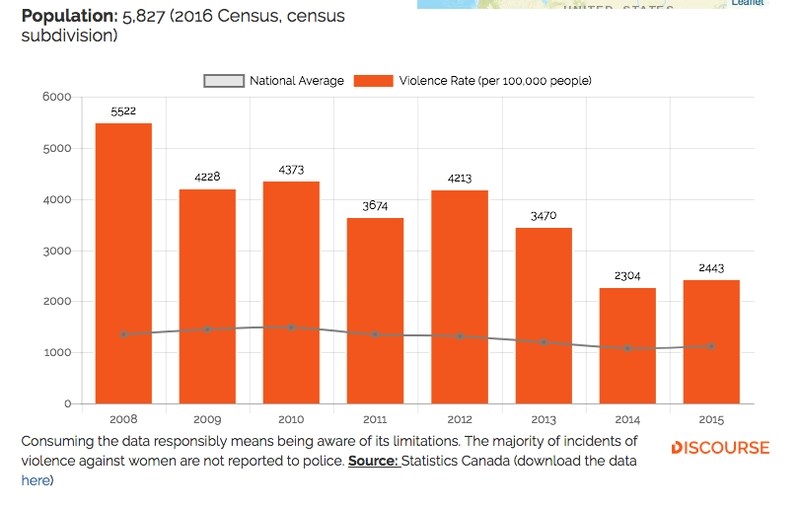According to information put together by Discourse Media in Vancouver, St. Paul has one of the highest rates of police-reported violence against women in the country.
Emma Jones is reporter with Discourse Media. She published a data article that included statistics from hundreds of communities across Canada.
“For months I went back and forth with Statistics Canada to access the police-reported data on violence against women. It turns out, St. Paul has one of the highest rates of police-reported violence against women in the country,” said Jones, in an email.
Included in the statistics is a list of the 10 Canadian communities with the highest rates of police-reported violence against women. The “municipal” area of St. Paul sits at number five. Two other Alberta communities are included in the table, with High Prairies at number eight, and High Level at number 10.
“We’ve always known that St. Paul is a so-called ‘hot spot’ for domestic violence,” says Noreen Cotton, executive director with the St. Paul & District Crisis Association. “Statistics have repeatedly shown us the high number of reported incidents.”
“Incredibly, statistics Canada also show us that only 25 to 30 per cent of domestic violence is reported to the police,” says Cotton, adding, “It’s also important to remember that these statistical reports only represent physical violence. It does not address other forms of domestic violence including psychological, spiritual, financial, verbal, cultural and unreported sexual abuse.”
The issues that come along with domestic violence are challenging and serious.
“When women are experiencing domestic violence, they are often facing a very difficult decision. Deciding between staying in a violent situation or leaving and facing the reality of possibly becoming homeless,” says Cotton. “Women face many fears - the fear of leaving, fear of staying, fear of homelessness, of poverty, of losing their job , their community, their family. Many fear losing their children either to their abusive partner, or to child welfare.”
According to Cotton, contributing factors to the high rate of domestic violence in our area is a lack of affordable housing options. Many women are left with no choice but to either stay or go back, hoping for positive change.
“However, the reality is that the cycle of violence continues, and the number of violent incidents increase,” says Cotton. “What is needed are more options for families. What is needed is safe, secure transitional housing with wrap around supports.”
In St. Paul, the women’s shelter is currently going through a large expansion project, not only for the emergency shelter, but also transitional housing.
“We are adding two self contained, transitional housing apartment units where families can stay for up to two years. This model will provide needed safety, security, supports and programming for families as they transition to independence.”
From 2008 to 2015, St. Paul was above the national average every single year. While it appears the numbers are decreasing overall, the violence rate did appear to increase slightly between 2014 and 2015.
A disclaimer in the article also notes that “Consuming the data responsibly means being aware of its limitations. The majority of incidents of violence against women are not reported to police.”
Given the momentum around the #MeToo social media movement, Jones felt it was an important time to reach out to outlets who could share the information she had gathered.
“The data set, which includes over 600 communities, shows that, from 2008-2015, the national average of police-reported violence against women appears to be experiencing a gradual decrease, with the 2015 rate being 1,113.9 reports acts of violence per every 100,000 people,” said Jones.
“But the real trends that underpin the data are much more nuanced,” she added. Jones hopes the information can spark questions, and start conversations.
In 2008, the violence rate in St. Paul was calculated at 5,522 per 100,000 people. That number decreased to 2,443 per 100,000 people, in 2015.
“We know that women leaving domestic violence are at the greatest risk of harm when leaving or after they have left. Domestic violence homicides are still happening, women and children are still at risk, more has to be done. There are more than 36 women’s emergency shelters and 13 second stage transitional shelters in our province. All of them are typically full all the time,” says Cotton.
For Jones, she’s interested in learning more about the numbers, and why they are what they are.
“I’m curious to understand the context contributing to these numbers in your community: What stories does the data tell? And perhaps more importantly, what perspectives or trends are missing from the data?”



